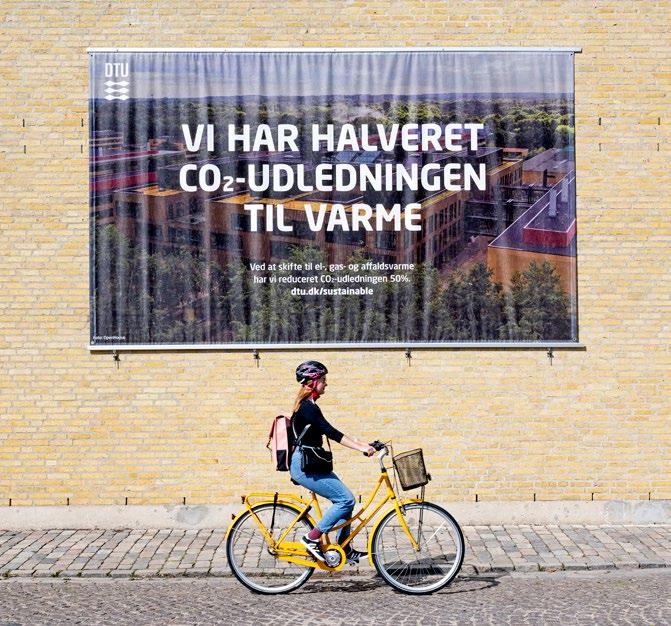
2 minute read
Focus areas, objectives, and initiatives for resource consumption with care
DTU’s resource consumption with care is grouped into three focus areas.
All three areas have environmental and climate footprints, and DTU has great focus on climate and
Energy-related climate footprint on campus
From 2013 to 2020 DTU has halved its carbon emissions from heating and electricity. We have done this through energy optimization and by replacing our own gasfired plants with district heating at Risø and Lyngby Campus.
Resource consumption with care
Circular economy in university operations environmental challenges being closely correlated and having to be addressed together. In the following, a description is provided of DTU’s approach to working with climate footprints and the University's CO 2 e emissions1, after which the three focus areas are described in a broader cohesive perspective.
Goals 1-2: Energy consumption
Goal 3: Procurement
Goals 4-5: Waste as a resource
Goal 6: Water
Goal 7: Transport
Goal 8: New construction and building operations
Sustainable campus development
Goal 9: Indoor climate and working environment
Goal 10: Biodiversity
Goal 11: Campus environment and art
Climate accounts
DTU has had climate accounts prepared for 2019. These accounts constitute an analysis of the University’s CO 2 e emissions in accordance with the guidelines in the international standard for calculation and reporting of CO 2 emissions, the Greenhouse Gas Protocol (GHG), which breaks down the CO 2 e footprint into three categories: Scopes 1, 2 and 3. The analysis shows that DTU's total emissions in 2019 amount to 143,700 tonnes of CO 2 e. 85 per cent of the emissions relate to activities in scope 3, i.e. acquisitions of capital goods such as buildings and equipment, purchased goods and services, as well as business travel. This picture resembles that of other universities.
1) CO2 is the chemical formula for carbon dioxide. ‘e’ indicates that other types of greenhouse gases (equivalents) have been included in the calculation after conversion to CO2 based on their relative global warming potential (GWP).
Scope 1 covers direct emissions from own cars and machinery and, for example, natural gas used for steam production as well as other fossil fuels used for process energy in the campus areas. Fuel consumption on board DTU’s research vessels and for own vehicles will be included in future reporting.
Scope 2 covers indirect emissions from the generation of purchased energy such as electricity and heating on the campus areas via external energy suppliers, which, since 2019, has primarily been the waste management and energy company Vestforbrænding.
Scope 3 covers other indirect emissions related to DTU’s activities and primarily comprises the goods and services that DTU purchases. Reduction of the carbon footprint in this area requires a circular approach and collaboration with suppliers of services.
DTU has projects that can help reduce carbon impact, for example in construction, procurement procedures, transport, and recycling of materials and products on campus. DTU focuses on the areas in which the University has the greatest possibility of creating a direct positive effect.
Under the auspices of the universities’ interest organization, Universities Denmark, DTU is participating in the development of a joint climate accounting standard. The purpose is to promote climate-friendly and sustainable operations at Danish universities.
Going forward, DTU will strengthen its overall climate and environmental reporting by creating increasingly close collaboration between DTU’s Office for Budget and Accounting, IT Services, and Campus Service, among other offices.




